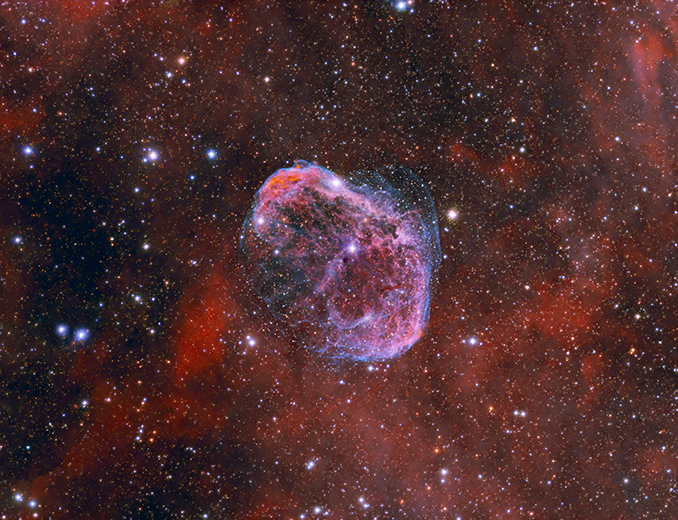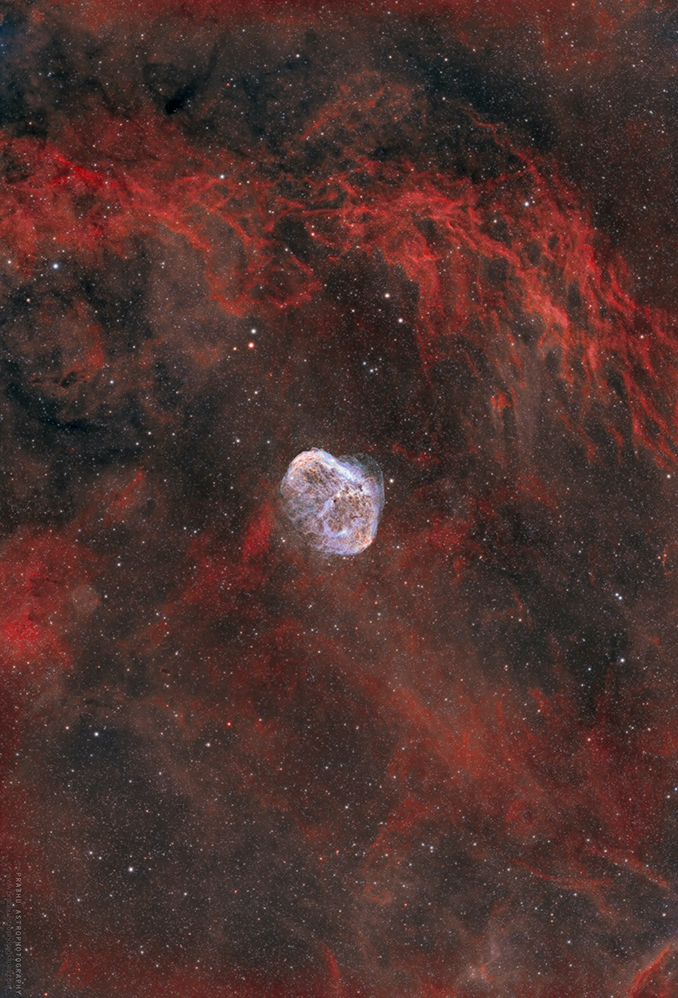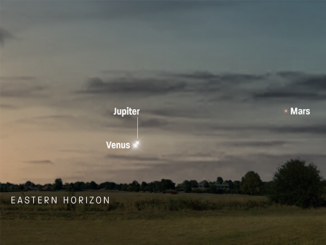
Superb Cygnus (the Swan) owns the summer nights. It is a constellation overloaded with bright deep-sky objects, including some exceptional nebulae. In Cygnus’ deep-sky hierarchy, the Crescent Nebula (NGC 6888, Caldwell 27, SH2-105), a beautifully intricate, bubble-like Wolf-Rayet nebula, can claim to lie in the top rank, although it can provide a bit of a stiff challenge for visual observers.
It is a dream of an object for deep-sky imagers though, with the fierce stellar wind from the massive Wolf-Rayet star (WR 136) at the nebula’s centre sculpting its complex filamentary structure as it barrels into copious amounts slower-moving gas already thrown-off by the star while in its red giant phase.

How to observe
Cygnus can appear to be a confusing and disorientating place for the uninitiated. The deep-sky newbie without a GoTo mount, sweeping across its rich Milky Way star fields can soon get lost. Luckily, the Crescent isn’t too difficult to find once you’ve recognised the overall shape of the ‘Northern Cross’, Cygnus’ main asterism or star pattern.
Mighty Deneb (alpha [a] Cygni), one of the fabled ‘Summer Traingle’ stars, marks the tail of the Swan, while Sadr (gamma [g] Cygni), lying just over six degrees south-west of Deneb, lies at the intersection of the Cross. If you keep moving in the same direction away from Sadr, after 2.7 degrees you’ll land on NGC 6888. There’s a small triangle of seventh-magnitude stars lying just to the east. In late-August, the Crescent Nebula culminates almost at the zenith at about 11pm BST.

On a fine and moonless night a 150mm (six-inch) telescope, operating at around a magnification 100x, could have sufficient light grasp to show the brightest part of this elliptical-shaped nebula, about a seven-arcminute-long and one-arcminute-wide arc on its north-eastern side that’s orientated north-west to south-east (position angle 215 degrees). You’ll fare better though with a 200–250mm (eight to ten inch) aperture telescope. Overall, the Crescent covers 20 x 10 arcminutes and lies 4,700 light years away, giving it a physical diameter of 25 light years.
One essential accessory for observing the nebula is an O-III or UHC narrowband filter, which will increase the contrast between the Crescent and the sky background; effectively, the nebula will ‘pop’ into view.




